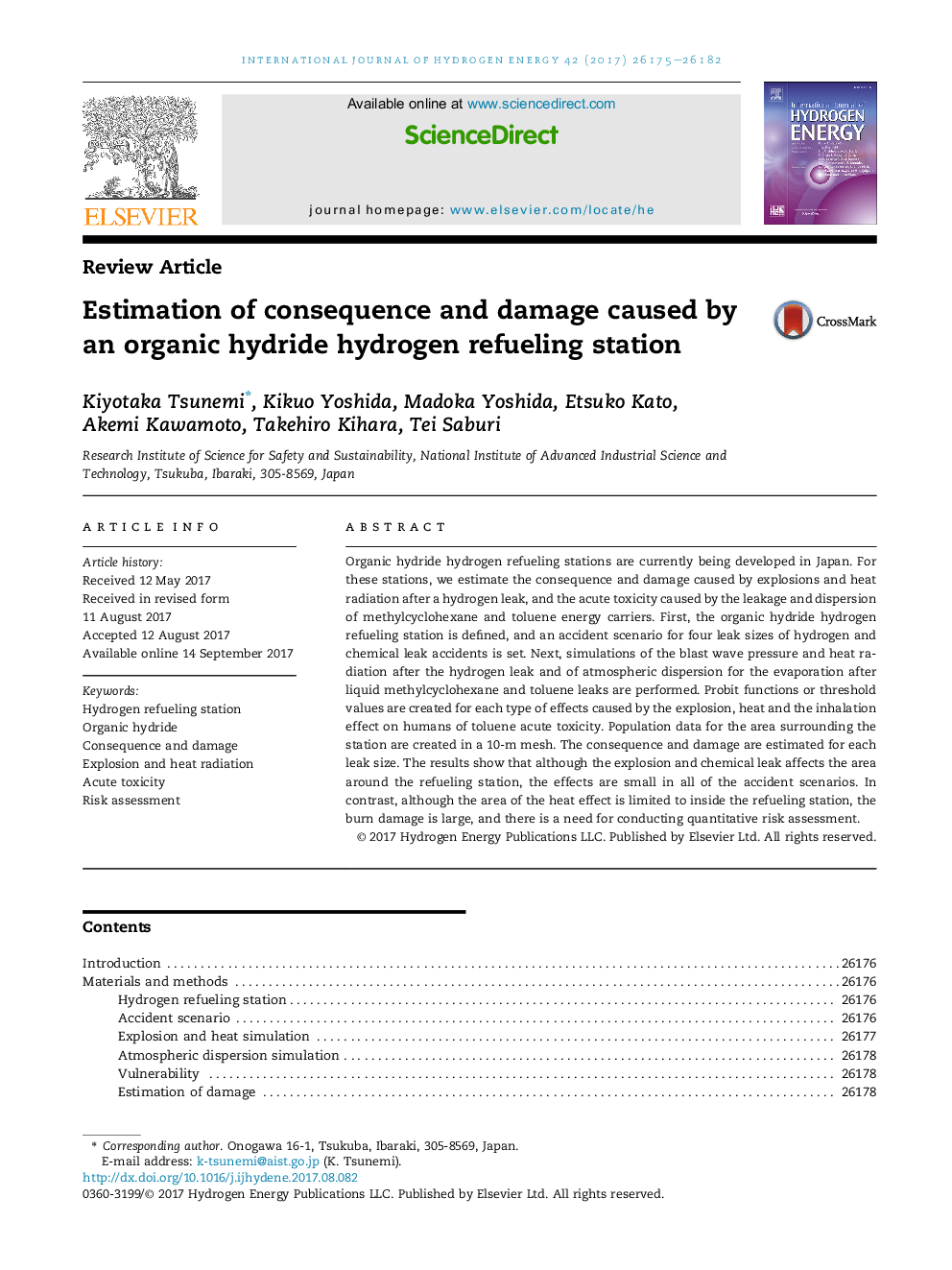| Article ID | Journal | Published Year | Pages | File Type |
|---|---|---|---|---|
| 5145179 | International Journal of Hydrogen Energy | 2017 | 8 Pages |
Abstract
Organic hydride hydrogen refueling stations are currently being developed in Japan. For these stations, we estimate the consequence and damage caused by explosions and heat radiation after a hydrogen leak, and the acute toxicity caused by the leakage and dispersion of methylcyclohexane and toluene energy carriers. First, the organic hydride hydrogen refueling station is defined, and an accident scenario for four leak sizes of hydrogen and chemical leak accidents is set. Next, simulations of the blast wave pressure and heat radiation after the hydrogen leak and of atmospheric dispersion for the evaporation after liquid methylcyclohexane and toluene leaks are performed. Probit functions or threshold values are created for each type of effects caused by the explosion, heat and the inhalation effect on humans of toluene acute toxicity. Population data for the area surrounding the station are created in a 10-m mesh. The consequence and damage are estimated for each leak size. The results show that although the explosion and chemical leak affects the area around the refueling station, the effects are small in all of the accident scenarios. In contrast, although the area of the heat effect is limited to inside the refueling station, the burn damage is large, and there is a need for conducting quantitative risk assessment.
Related Topics
Physical Sciences and Engineering
Chemistry
Electrochemistry
Authors
Kiyotaka Tsunemi, Kikuo Yoshida, Madoka Yoshida, Etsuko Kato, Akemi Kawamoto, Takehiro Kihara, Tei Saburi,
